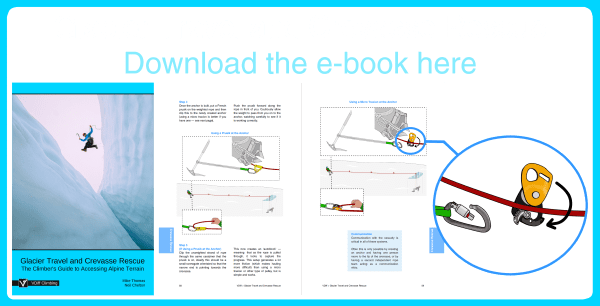This Crevasse Rescue article is part of the book - Glacier Travel and Crevasse Rescue.
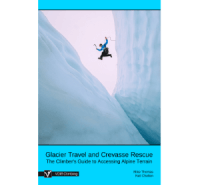
Imagine you are travelling on a glacier as a team of two, and your partner in front suddenly disappears down into the snow.
Step 1
The first and most important thing is to hold the fall. This will not be easy! The best technique is to dig the sides of your feet into the snow (imagine a tug of war type action), while plunging the shaft of your axe into the snow.
If you end up being dragged along the surface, the self arrest position will hopefully stop you as the rope cuts into the lip of the crevasse and increases friction.
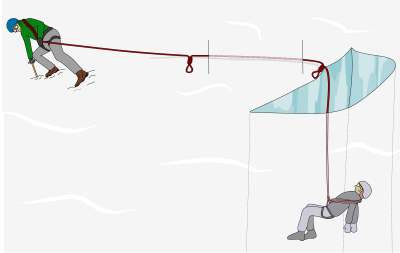
Step 2
After holding the initial fall, kick a secure platform for your downhill foot, or cut one with your axe. This will give you a bit more security to hold the weight while you are making the anchor. Shout to your partner and check they are okay. It might be very difficult for you to hear them but it’s worth trying. If your partner is uninjured and capable of prusiking up the rope or climbing out of the crevasse then that would be the best solution.
Step 3
If you cannot communicate with your partner or they are unable to climb/prusik out by themselves, then you will continue. Make the appropriate anchor depending on snow condition. This will be difficult because you are also holding the weight of your partner on the rope. The anchor needs to be very good, so don't rush it. Be precise and get it right.
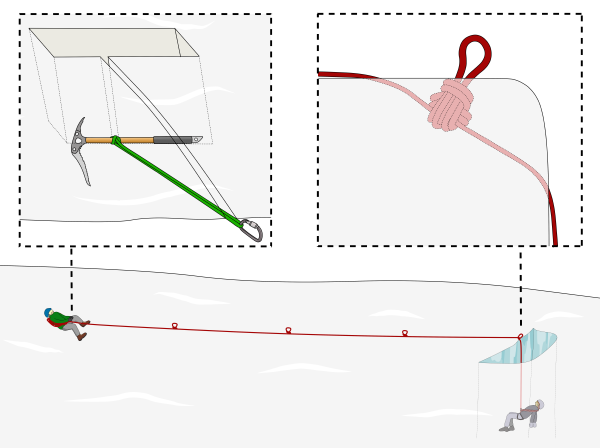
Step 4
Once the anchor is built, put a French prusik on the weighted rope and then clip this to the newly created anchor (using a micro traxion is better if you have one – see below).
Push the prusik forward along the rope in front of you. Cautiously allow the weight to pass from you on to the anchor, watching carefully to see if it is working correctly.
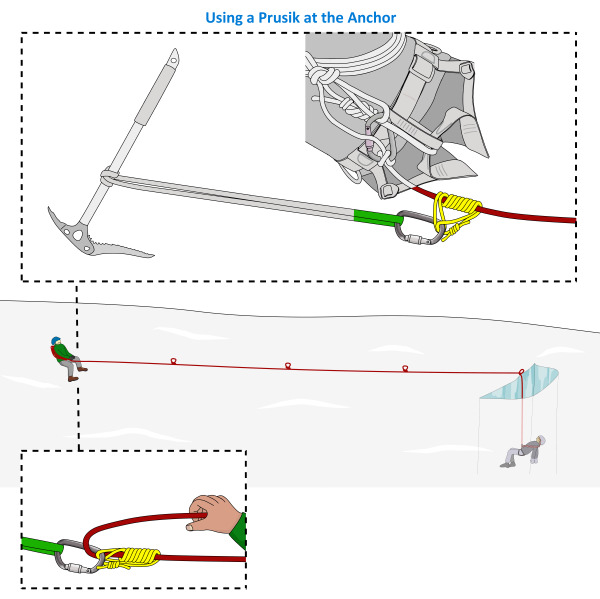
Step 5 (If Using a Prusik at the Anchor)
Clip the unweighted strand of rope through the same carabiner that the prusik is on, ideally this should be a small screwgate orientated so that the narrow end is pointing towards the crevasse. This now creates an ‘autoblock’ – meaning that as the rope is pulled through, it locks to capture the progress.
This setup generates a lot more friction (which makes hauling more difficult) than using a micro traxion or other type of pulley, but is simple and works.
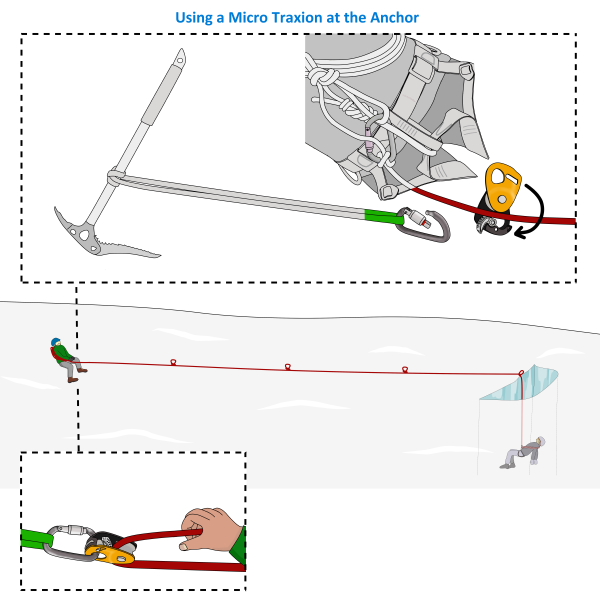
Step 6
Tie an overhand knot in the slack rope to act as a backup in case the prusik/pulley slips.
Step 7
Tie a classic prusik on the weighted rope and connect it to your harness. This is to protect you in case you fall into another crevasse but also acts as a backup in case your snow anchor starts to fail. You can now remove all of your chest coils, but remain tied in to the end of the rope.
Step 8
Move down the weighted rope towards the lip of the crevasse, sliding the prusik as you go. If there are jamming knots in the rope, you’ll need to pass them (see below). Be very cautious as you approach the lip of the crevasse at this point and keep the prusik behind you to protect yourself from falling in.
Check if your partner is okay. If they are fine but cannot prusik out, you will need to haul them. If your partner is severely injured or unconscious it might be necessary to prusik or abseil down to them and administer emergency first aid or call for rescue services. Never haul an unconscious casualty!
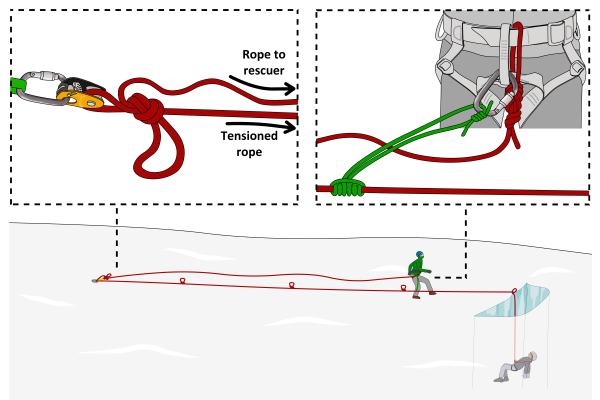
If You Need to Walk Past Jamming Knots
To pass a jamming knot while moving towards the crevasse, clip into its loop, then move the prusik over to the next section of rope. Repeat as necessary.
A much quicker (but more dangerous) method is to walk past all the jamming knots first and then attach your prusik. This does not offer a backup for the snow anchor and if you fall into a crevasse, the anchor would be shock-loaded.
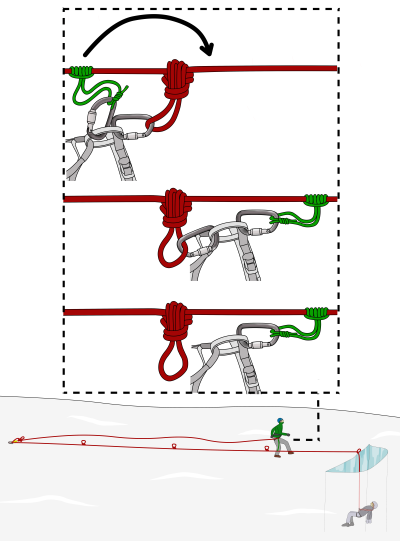
Step 9
Clear the edge of the crevasse. The rope will have cut a slot through into the lip. If it has gone deep, you will need to clear and cut the lip of the crevasse, being careful not to knock anything big onto your partner below. Then pad underneath the rope with walking poles to prevent the rope cutting further into the lip while you are hauling.
Step 10
Move back from the edge of the lip. Clovehitch the slack rope into your harness and unclip from the prusik. Take the rope which now runs between your harness and the anchor and clip it to the prusik as shown. This is now a 3:1 hauling system.
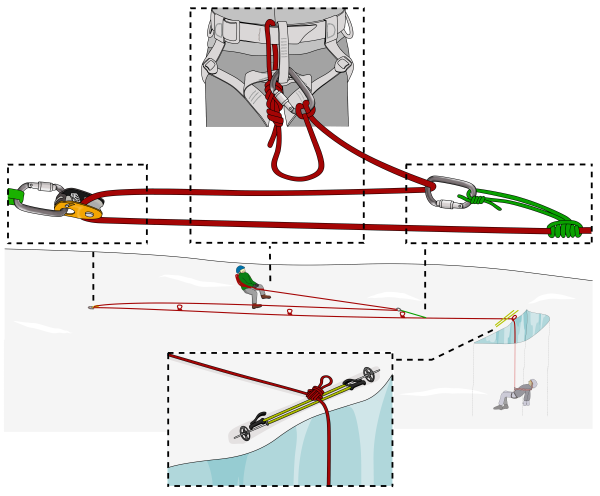
Step 11
Using the power in your legs, claw your way back up to the anchor. As you do this, pull down on the dead rope coming from the back side of the pulley to increase efficiency. Pull in a straight line with one leg either side of the ropes.
Step 12
Stop just before you reach the anchor and allow the weight to transfer from your harness back to the autoblock/pulley. Do not continue to move past the anchor as you may disturb the snow which provides its strength.
Step 13
Repeat the hauling process as needed. Move back towards the crevasse, adjusting the clovehitch on your harness as you go. Then adjust the prusik back towards the lip to reset the system.
Step 14
The final stage is to get your partner over the lip of the crevasse. They will probably be stuck if the rope has cut in. Don't just keep pulling, as it is possible to cause injury. If they can’t climb out themselves, you will have to go to the lip and help them. Tie yourself in tight and give them a hand, or throw a loop of rope for them to pull on.
Crevasse Rescue - Hauling Past Knots
If you have tied jamming knots in the rope, it will be necessary to deal with them when hauling.
Step 1
Haul as described above, but stop when the first jamming knot is 10cm away from the pulley.
Step 2
Attach a 30cm sling to the anchor. Put a French prusik on the weighted rope below the jamming knot and connect it to the sling.
Step 3
Pull with your harness again to free the pulley so that the weight can be transferred onto the prusik.
Step 4
With the weight now removed from the jamming knot, untie it and pull the slack rope through.
Step 5
Remove the sling, prusik and carabiners and continue hauling as normal. Repeat this process for each jamming knot.
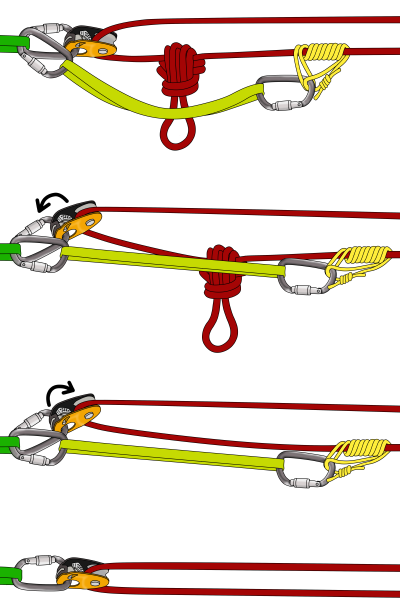
Crevasse Rescue - Teams of Three or Four
Holding the initial fall is easier with more climbers on the surface to share the weight. The rescue principles are the same as described above, but the situation is easier to deal with.
Step 1
The middle climber holds the weight, while the back climber moves forward. As they move forward, they should reduce the slack rope by attaching a prusik and sliding it along.
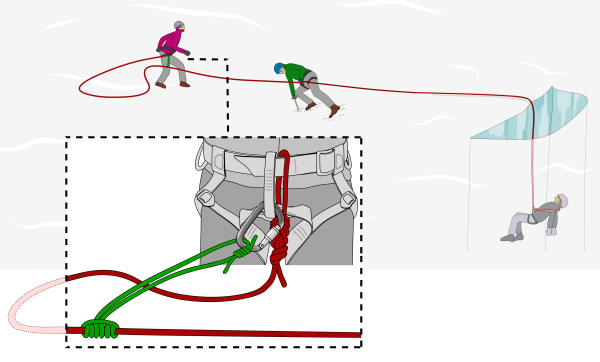
Step 2
The back climber moves in front of the middle climber and constructs an anchor.
Step 3
Once the weight is transferred to the anchor, the system is the same as for a team of two.
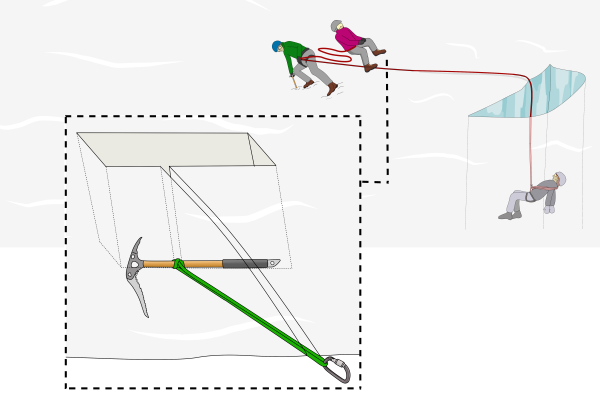
Step 4
The climber who built the anchor should attach to it and sit in a braced position. This protects them and also creates a backup for the anchor. They can then help to haul from their braced position.
Teams of Four
These steps can be modified for a team of four, with an extra climber to assist with hauling or taking some of the strain from the anchor.
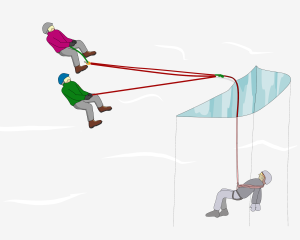
Communication
Communication with the casualty is critical in all of these crevasse rescue systems. Often this is only possible by creating an anchor and having one person move to the lip of the crevasse, or by having a second independent rope team acting as a communication relay.
